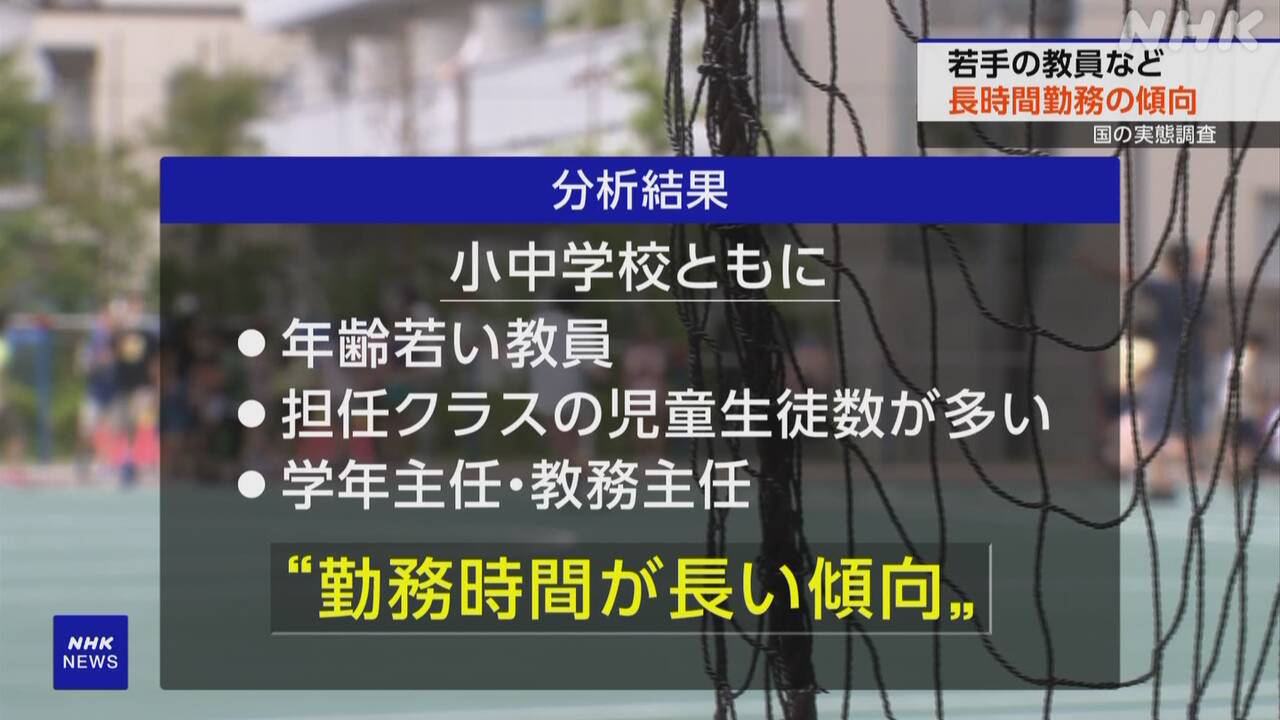The analysis results of a survey of teachers' work conditions conducted by the government for the first time in six years have been compiled, and it has been found that young teachers and homeroom teachers with a large number of children in their classes tend to work longer hours. The Ministry of Education, Culture, Sports, Science and Technology says it is necessary to provide support for young students and reduce class sizes.
The survey was conducted by the Ministry of Education, Culture, Sports, Science and Technology for the first time in six years, targeting approximately 35,000 elementary and junior high school teachers in 2022, and the final figures were announced on the 4th.
According to the survey, the average working hours at schools per weekday were 10 hours and 45 minutes at elementary schools and 11 hours and 1 minute at junior high schools, a decrease of about 30 minutes from the previous survey, but teachers still work long hours. 77.1% of junior high school teachers and 64.5% of elementary school teachers were expected to work more than 45 hours a month, which is the government's upper limit for overtime.
The analysis results of the survey were also made public, and found that at both elementary and junior high schools, younger teachers, teachers with a large number of students in their classes, and teachers who are in charge of grade level leaders or academic affairs leaders have different working hours. This means that there has been a long-term trend.
In addition, psychological stress tended to be higher among teachers who worked long hours, were younger, and had children in their classes who were not attending school.
The Ministry of Education, Culture, Sports, Science and Technology says that in addition to supporting young teachers and reducing class sizes, it is also necessary to reduce the burden of dealing with a diverse range of children and students, such as by collaborating with school counselors.

